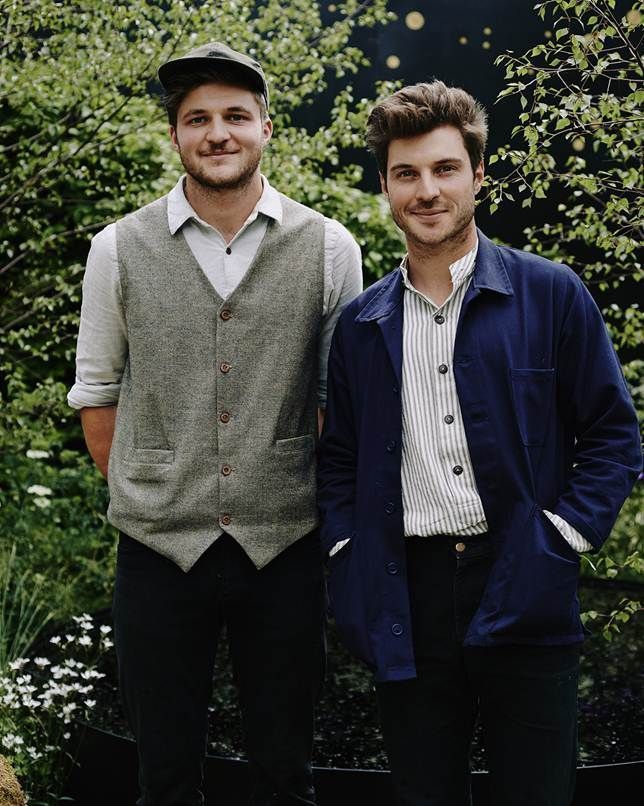Family Ties - Exploring Brothers Cousins Connections
When we think about family, our minds often go to the people closest to us, those we grew up with, the ones who share our name or our home. There's a certain warmth, you know, that comes with the thought of kinship, of shared histories and common experiences. It's a feeling that seems to connect us to something much larger than ourselves, a sort of long line stretching back through time.
It's interesting, really, how these connections branch out, sometimes in ways we might not always consider at first glance. We have our immediate family, of course, the people we call our siblings, our parents, our children. But then there are the wider circles, the relatives who might live a little further away, or those who join our family through marriage, adding new branches to the family tree, more or less.
This idea of family, especially the ties between brothers and what that can mean for cousins, shows up in so many different stories and situations, from ancient writings to modern-day groups. It's a theme that seems to run through human experience, whether we're talking about very old accounts or the lives of people who are well-known today, that.
- Dames N Games Sports Bar
- Gibbs High School Basketball
- Fallen Angels Clothing
- Halo Spice Only Fans
- Happy Hour Tampa Fl
Table of Contents
- The Deep Roots of Family Bonds
- Stories of Siblinghood Across Time
- Unpacking Family Relationships - How Do They Work?
- Modern Expressions of Brotherhood
The Deep Roots of Family Bonds
When we consider the bonds that tie families together, it becomes quite clear that these connections often stretch back through many generations, forming a sort of network of relationships that holds things together. These ties can be quite strong, you know, shaping who we are and the stories we tell about ourselves. The idea of brotherhood, for instance, appears in some of the oldest stories we have, showing up in writings that have been around for a very long time, actually.
For example, in some very old texts, a person named Jesus is mentioned as having several brothers. These accounts speak of James, Joses, Simon, and Judas as being part of his family unit. It's a detail that gives us a bit of a picture of his immediate family circle, showing that he wasn't, like, an only child. The written accounts, however, do not really say how old Jesus's brothers were, which is a detail that isn't really laid out clearly in those old writings, you know. This lack of specific age information means we don't get a full picture of their individual places within the family structure based on birth order, but it does confirm their presence, more or less.
The idea of a large family with many brothers is something that comes up repeatedly in different historical accounts. It suggests a certain kind of family life, perhaps one where there were many people around, sharing experiences and responsibilities. This kind of family setting, with multiple siblings, could lead to all sorts of interactions, some supportive and some, you know, a bit challenging, just like any family, really. The dynamics within these groups of brothers could be quite varied, creating a rich tapestry of personal stories that might influence their lives in many ways, too it's almost.
Tracing Connections - Are Brothers Cousins?
The question of whether brothers can also be cousins might seem a bit odd at first, but it points to the different ways family lines can intersect. Generally speaking, brothers share the same parents, while cousins share grandparents but not parents. Yet, the relationships within a family can become quite intricate, especially when we look at how different family branches come together, sometimes through marriage or other arrangements, you know. It’s a bit like tracing paths on a very old map, where some lines might crisscross in unexpected ways, so.
Consider, for a moment, the concept of a family tree where new connections are always being made. If two sets of brothers from different families marry two sets of sisters from another family, their children would be both brothers and cousins to each other in a very specific way. This kind of overlap is something that happens in real life, making family structures a bit more interesting than they might appear on the surface. It shows that the labels we use for family members are just a way of trying to make sense of very complex, living relationships, you know. It's not always a simple straight line, that.
The idea of "brothers cousins" isn't about brothers being the same person as cousins, but rather about the shared family connections that extend beyond immediate siblings. It's about recognizing that the people we call our brothers often have their own sets of relationships, which in turn connect us to a wider circle of family members, including those we call cousins. These connections form a sort of web, where everyone is linked in some way, creating a sense of belonging and shared history, you know, in a way. It’s a fundamental part of how families grow and maintain their ties over time, too it's almost.
Stories of Siblinghood Across Time
Looking back through different historical accounts and famous narratives, we find many stories that highlight the presence and importance of brothers in people's lives. These accounts, you know, often give us a glimpse into the family settings of individuals who made a mark on the world, showing us how their early lives were shaped by the people they grew up with. It's a reminder that even very well-known figures had family ties, just like anyone else, really.
For instance, Francis Xavier, a person known for his work in different parts of the world, was said to have four brothers. This detail, you know, paints a picture of a household with multiple children, suggesting a busy and perhaps very lively upbringing. Similarly, Maximilian Kolbe, another person whose story is often told, also had four brothers, along with one sister. These numbers, in a way, give us a sense of the size of their immediate families, hinting at the kind of shared experiences they might have had growing up, so.
Even in very old stories of conflict, the idea of brothers appears. Take, for example, the account of Goliath, a very large person mentioned in ancient writings. It is said that Goliath had three brothers. This detail is sometimes brought up in discussions about a famous story where a person named David faced Goliath. Some people, you know, have wondered why David chose five smooth pebbles when challenging Goliath, as mentioned in one old text (1 Samuel 17:40). The thought, perhaps, was that David might have been preparing for Goliath and his brothers, but there isn't really a clear reason given in the old writings for the specific number of stones, which is a bit interesting, you know. It shows how people sometimes try to find deeper meanings in the details of old stories, even if the text doesn't spell it out directly, that.
What Kinship Ties Did Historical Figures Have?
When we look at the lives of historical figures, it's often the case that their family connections, especially their siblings, played a significant role in their personal journeys and public endeavors. These kinship ties, you know, could provide support, companionship, or sometimes even rivalry, shaping the paths these individuals took. It's a way of seeing how personal relationships fit into larger historical narratives, you know, very, very often.
Consider the story of Jacob's children, as told in ancient texts. He had many sons: Reuben, Simeon, Levi, Judah, Dan, Naphtali, Gad, Asher, Issachar, Zebulun, and Benjamin. And there was also a sister, Dinah. This was a very large family, with many brothers and one sister, creating a complex web of relationships right within one household. It's also mentioned that Benjamin was the only one who shared both parents with Joseph, which highlights a particular bond between those two, a bit different from the other brothers, you know. This detail points to the different kinds of connections that can exist even within a group of siblings, depending on shared parentage, more or less.
Then there are figures like the Wright Brothers, Orville and Wilbur, who are widely recognized for their pioneering work in aviation. They were, you know, brothers who worked together very closely on something that changed the world. They received many recognitions for their work, including a notable one from the Smithsonian. Their story is a powerful example of how a shared purpose and a close sibling bond can lead to remarkable achievements. It shows, too it's almost, that working with someone you know very well, like a brother, can sometimes make a big difference in what you can accomplish together, so.
Unpacking Family Relationships - How Do They Work?
Family relationships, when you really think about them, are a bit like intricate puzzles, with each piece representing a person and their connection to others. They aren't always straightforward, and sometimes, you know, the way we define a relationship can depend on how someone came into the family. It's a system that can seem simple on the surface but has many different layers once you start looking closely, that.
For instance, there's a common question that comes up about family terms: what relation is a brother's stepdaughter to you? If it were your brother's own daughter, she would be your niece, a pretty direct connection. However, since it's his stepdaughter, she becomes your step-niece. This distinction, you know, highlights how relationships formed through marriage add new branches to the family tree, creating specific terms for these new connections. It’s a way of acknowledging the different paths family members take to become part of the larger group, you know, basically.
These terms help us to categorize and understand the various ways people are linked within a family structure. They show that family isn't just about bloodlines but also about the bonds formed through commitment and shared life experiences. A step-niece, for example, might not share a direct biological link, but she is still very much a part of the extended family unit, and the relationship can be just as meaningful as any other, you know, in some respects. It's about recognizing the warmth and connection that can grow between people who become family through different circumstances, so.
Understanding Step-Relations - What About Brothers Cousins by Marriage?
When we talk about "brothers cousins" in the context of step-relations, we're looking at how the lines of kinship can extend through marriage, bringing new individuals into the family circle. This happens when a brother marries someone who already has children, or when two people with children from previous relationships come together, you know. It creates a situation where new cousin relationships can form between the children of these blended families, making the family web a bit more spread out, more or less.
So, if your brother marries someone who has a child, that child becomes your brother's stepchild. And if that stepchild then has children, those children would be related to your own children as a type of cousin, even if the direct biological link isn't there in the same way as with a first cousin. It's about how family units expand and adapt over time, incorporating new members and creating new connections, you know. These relationships, while perhaps defined by a "step" prefix, are still very much a part of the family's shared experience and history, that.
The beauty of these step-relations is that they show the flexible nature of family. It’s not always about strict biological ties but also about the bonds of affection and shared life that develop between people. The concept of "brothers cousins" here expands to include these new connections, recognizing that family is built on many different kinds of relationships, all of which contribute to the richness of the overall family picture, you know, quite often. It's a testament to the way families grow and change, welcoming new members and creating new shared histories, so.
Modern Expressions of Brotherhood
In our own time, the idea of brotherhood continues to appear in many different ways, from family units to groups of people who come together with a shared purpose. It's a concept that shows up in popular culture, in community groups, and in stories of people working side by side to achieve something. This ongoing presence, you know, suggests that the bond between brothers, whether by birth or by choice, remains a very powerful and meaningful connection in human experience, you know, very, very much so.
There are groups of people, for instance, who share a common purpose and refer to themselves as brothers, even if they aren't related by blood. An example of this is the Congregation of Christian Brothers. These are lay religious people who have made certain commitments, like vows of poverty and chastity. This group was started by a person named Blessed Edmund Rice. Their story shows how the idea of brotherhood can extend beyond immediate family to include a community of people who share beliefs and a way of life, you know, basically. It's a different kind of family, perhaps, but one built on shared values and mutual support, that.
And then there are people whose lives become the subject of public interest, and whose family relationships, particularly their brothers, are part of their public story. For instance, questions sometimes come up about a person named Dave Pelzer. People often ask about how many brothers he has, who was the oldest brother, what his birth name is, or how many children he has. These questions, you know, show that there's a public curiosity about the family background of well-known individuals, suggesting that these family details are seen as important parts of their personal story, so.
Musical Groups and Brothers Cousins - A Look at Famous Bands
The world of music often gives us examples of brotherhood in action, with bands frequently formed by siblings who share a common passion for creating sounds. These groups, you know, often have a unique dynamic, built on years of shared experiences and a deep understanding of each other's ways. It's a kind of collaboration that can be very powerful, bringing together different talents under a single family name, too it's almost.
A very well-known example is the Jonas Brothers, a popular band made up of three brothers. Their names are Nick, Joe, and Kevin. There's also a fourth brother, Franklin Nathaniel, whose name is sometimes mentioned in connection with the family. The fact that these brothers have worked together to create music and perform for many people shows how a family bond can be the foundation for a successful creative venture. It's a bit like building something truly special with the people you know best, you know, very, very often.
Another group, the Statler Brothers, started their musical journey in a place called Staunton, Virginia, back in 1955. This quartet, a group of four people, first performed gospel music. Their story, you know, also highlights how a shared family connection, or at least a very close bond that feels like family, can lead to a long and impactful career in music. It suggests that there's a certain harmony, perhaps, that comes from working with people who are deeply connected, whether through birth or through many years of shared purpose, you know, pretty much.
- Cameron Ray
- Cyberkitty Onlyfans
- African American Art And Culture Complex
- Aulii Cravalho Tits
- Suite P

The Brother Brothers. Photo by Erika Kapin.

Q&A - Melodic Distraction - The Mind Map

The rich brothers harry and david – Artofit